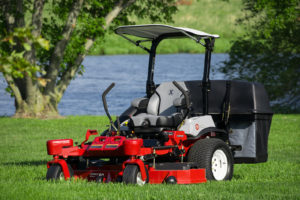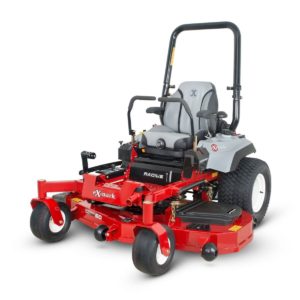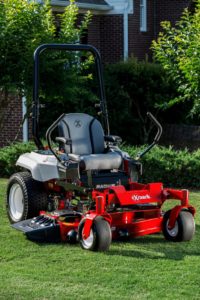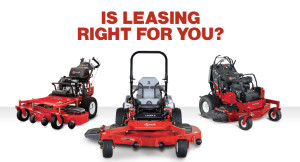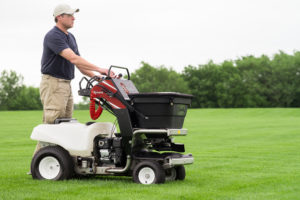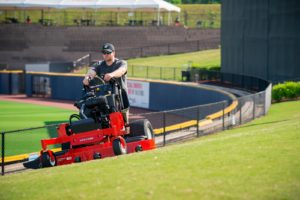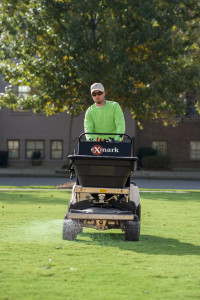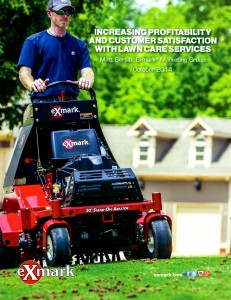Believe it or not, this Friday is the first day of spring. Along with the blossoming trees and pretty flowers comes the growing grass. If you own a landscaping or lawn care company, your busy season is fast approaching. One of the most important things you can do to prepare for a successful season of cutting grass is to service your mowers.
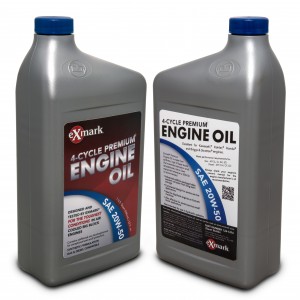
Oil is the life blood of your engine, so it makes sense to start the season off with a fresh oil change.
Here’s a quick list of ways to know when it’s time to tune your mower:
Service Tip 1: A New Season
Before every new mowing season, you should take your mower in for a tune-up. This doesn’t just apply to lawn-care companies. Whether you mow hundreds of acres a day or do your own yard once a week, every mower needs a tune-up before a new season of mowing. Lawn mowers are the workhorses of any landscaping company and need to be in perfect condition if you want to stay profitable. Using old, worn-out, faulty, or damaged equipment will cost your company time and money; two things you can’t afford to waste.
Even if your mower has only been idle for 1 or 2 months, that’s enough time for fuel to go bad, oil to become contaminated, blades to rust, or other problems to crop up. Consult your owners’ manual for a list of seasonal maintenance items for your specific machine.
Service Tip 2: A Poor Cut
If you or your employees have been using the same mower for more than a couple of months, you are probably well aware of how it cuts as well as its overall capabilities. If you notice a sudden decrease in cutting performance — areas of the grass no longer looking uniform and smooth but appearing uneven or chopped — your blade could stand to be sharpened.
As long as the decrease in performance is not accompanied by a sluggish engine or poor power, taking your blade to be sharpened will return your mower to mint condition. Look for a more detailed story on sharpening and balancing mower blades here next week.
Service Tip 3: Engine Trouble
Your mower should have its engine serviced at least once a year. And while annual tune-ups are great, how do you know if something is wrong in-between recommended maintenance?
Pay attention to the way your mower’s engine sounds. A sputtering or uneven idle can mean the fuel-to-air mixture is not balanced properly. A decrease in power can mean filters are clogged. Excess exhaust smoke or strange smells might mean oil is mixing with the fuel, and could be a sign of larger issues inside the engine. Unless you know engines inside and out (literally), these problems are best left to the professionals.
Service Tip 4: Dirt and Debris
Is your fleet of mowers dirty? Are your mowers covered in mud, grass, branches, and other messes? If so, it’s time to tune and clean your fleet. When you run a landscaping business, maximizing efficiency and cutting extra costs are both musts. Excess dirt and debris, though seemingly insignificant, reduce mower efficiency. A bit of mud near the axles, grass stuck to the blade, and branches jammed in the bodywork will each have a small impact on how much fuel you use and how long it takes to mow a given lawn. Add up all of those small issues and you will see a significant increase in not just running costs, but also machine wear over the course of a season.
DIY or Send It In?
Depending on how familiar you are with your mower, you may be able to do much of the maintenance on your own. Here are just a few of the things you should be able to do at home or in your shop:
- Changing your mower’s oil is a relatively straightforward process. Most mowers have an oil tank that can be emptied by removing a cap (in a process very similar to changing a car or truck’s oil). Just make sure to do this outside or over a cloth and bucket.
- Changing an air filter is simple enough for anyone to do. Most mowers, whether commercial or walk-behind, have easy-to-access filters mounted near the engine. All you typically need to do is remove the cap, pull out the old filter, and insert a new one. Just make sure you insert it in the proper direction, and consult your engine owner?s manual with any questions.
- Replacing a spark plug is easy, assuming you have a spark plug socket wrench. Just make sure plugs you install are properly gapped for your specific mower.

Scan the QR code on the model plate on your Exmark to be taken to maintenance schedules for your machine on MyExmark.com.
More involved maintenance is often better left to a qualified service professional. If you don’t feel comfortable tackling something on your own, don’t do it. You will lose more money fixing a mistake than sending it to the dealer to begin with.
Saving Money with Regular Maintenance
Here at Exmark, we make a wide range of modern mowers and lawn care tools that dramatically increase efficiency to help you get more work done using fewer resources. Whether you have a top of the line Exmark mower, or an older machine, maintaining what you have is one of the best ways to save money. Make sure you tune your mower this spring and repeat as often as necessary. Doing so will not only save you time and money, but will prevent more costly problems in the future.

